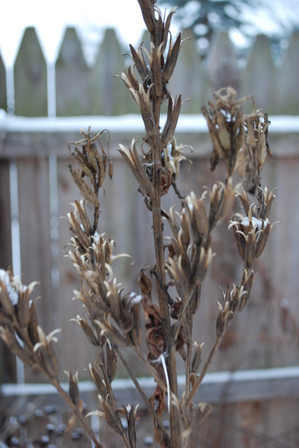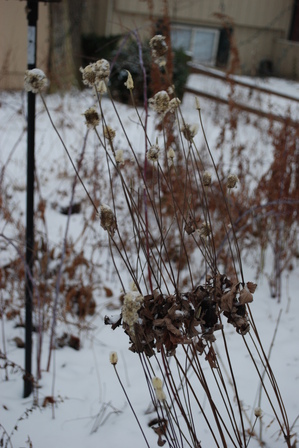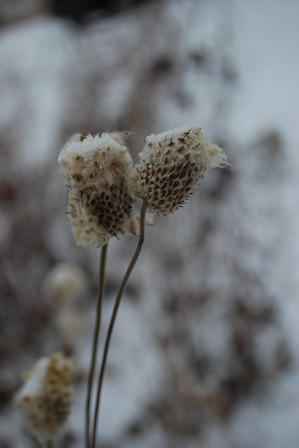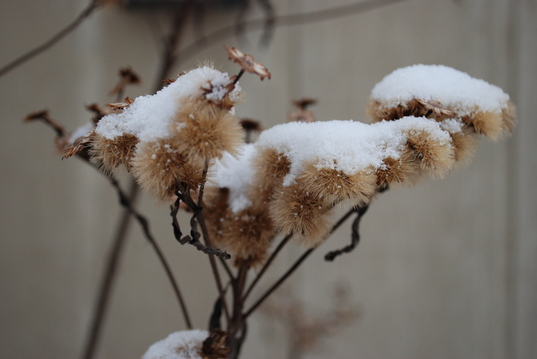Taking a look at Ann Arbor-area native plants in winter
OK, so we’re in winter. Not a time for blooms, but it is a time to see some pretty interesting remnants of the growing season gone by for native plants.

Common Evening Primrose Seedpods
Rick Meader | Contributor
It can be considered a weedy species because it is quite widespread in prairies, fields, roadsides and waste places, and the seeds can live a long time in the soil. In the winter, their seed pods are quite distinctive and can be a nice addition to a dried flower arrangement.
Another plant that is fun to observe in the winter is thimbleweed (Anemone virginiana). This perennial plant reaches from 3-5 feet tall and has a single white, 5-petaled flower on each stem.
It’s a pretty neat plant, as the flower extends about a foot beyond the highest leaf cluster, but what’s fun at this time of year is the fuzzy cluster of seeds that slowly fall apart through the winter. You’ll see this plant in open woods and open areas near woods.

Thimbleweed - A cluster of seedheads
Rick Meader | Contributor

Thimbleweed seedhead closeup
Rick Meader | Contributor

Ironweed seedheads
Rick Meader  |Contributor
We’ll talk more about these plants next summer, when they’re actually blooming, but for now enjoy their muted beauty against the white of winter.


Comments
Susan Bryan
Sat, Jan 9, 2010 : 1:28 p.m.
The snow landing on the little seed tufts make the plant landscape like a little fairy land! Nice article. Don't forget the Native Plant Seed Cleaning & Exchange that the Wild Ones is putting on at Matthaei Botanic Gardens - Wednesday 1/13 6:45. Bring some seeds to share, or just your nimble fingers. It is a great way to get your hands in the seeds - and they smell great!
limplotus
Wed, Dec 30, 2009 : 4:31 p.m.
I'm gung-ho on getting native plants (who knew dandelions aren't?) in my garden, so glad to see this, look forward to more, went backward to read your first one.